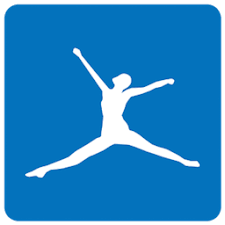So, you’re thinking about shelling out for MyFitnessPal Premium? At $19.99 a month or $79.99 a year, it’s not exactly pocket change, and you’re probably wondering if it’s gonna give you enough bang for your buck. We’ve been there – staring at the subscription screen, trying to figure out if it’s a game-changer or just a fancy add-on. Let’s chat about what you’re actually getting, what’s cool, what’s meh, and whether it’s worth it for someone like you.

What You Get with MyFitnessPal Premium
Premium takes the free app up a notch with tools that make tracking your food and fitness goals way easier. You get a barcode scanner to log packaged foods in a snap, a meal scanner that guesses calories from a photo of your plate, and detailed breakdowns of protein, carbs, and fats for every meal. It also supports intermittent fasting schedules, which is great if you’re into that. Picture this: you scan a granola bar at the gym or snap a pic of your dinner – done. These features save time and give you a clear view of your nutrition, which is key if you’re chasing specific health goals.
Free vs. Premium: Is the Upgrade Really Necessary?
What You Get with the Free Version
The free MyFitnessPal app is no slouch – it’s got the basics covered for anyone looking to keep tabs on their eating habits. You can log your meals, track calories, and add in your daily workouts, whether that’s a jog or a yoga session. It’s straightforward and works well if you’re just trying to stay mindful about what you eat. But there’s a catch: you’ll have to deal with ads popping up, and for newer users, you’re missing out on some handy tools like the barcode scanner. It’s like cooking with a basic knife – it gets the job done, but you might wish for something sharper.
What Premium Adds to the Mix
Stepping up to Premium feels like unlocking a deluxe version of the app. You get an ad-free experience, which makes logging your food way less annoying. The barcode scanner is a big win – just point your phone at a snack’s barcode, and boom, it’s logged. The meal scanner is another gem, letting you snap a photo of your lunch to estimate calories, which is perfect for homemade meals or restaurant plates. Premium also breaks down your macros – protein, carbs, and fats – for each meal, and it supports intermittent fasting schedules if that’s your thing. It’s like trading in that basic knife for a full chef’s set, with tools that make everything smoother and more precise.
The Big Differences That Matter
So, what’s the real gap between free and Premium? The free version keeps things simple but can feel clunky if you’re logging a lot of meals or eating out. Manual food searches take time, and ads can break your flow. Premium streamlines all that with its scanners and cleaner interface. It also gives you deeper insights, like how your macros stack up or how your fasting schedule’s going, which the free app doesn’t touch. For example, someone training for a big race, like Randi from the Empire State Building climb, leaned on Premium’s quick logging to stay on track without obsessing over every bite. If you’re just casually tracking, those extras might feel like overkill, but if you’re goal-driven, they’re a lifesaver.
Who Needs Premium (and Who Doesn’t)?
Here’s the deal: the free app is plenty for folks who just want to eyeball their calories or maintain their current habits. If you’re not super picky about nutrition details or don’t mind a few ads, you can probably skip the upgrade. But if you’re chasing specific goals – like hitting a protein target, balancing your diet, or sticking to a fasting plan – Premium’s tools make it way easier. It’s also great for people who hate manual logging or want data to tweak their routine. Think of it like this: free is for dipping your toes in, while Premium’s for diving deep. Try the free version first, and if you feel limited, the trial of Premium can show you if it’s worth the switch.

Is the Price Tag Worth It? Breaking Down the Cost
Let’s not sugarcoat it – MyFitnessPal Premium’s price can give you sticker shock. It’s more expensive than apps like LoseIt or even WeightWatchers, and you might wonder if you’re just paying for a shiny badge. But think of it like hiring a budget-friendly nutrition coach who’s always in your pocket. Here’s why the cost might be worth it, depending on your goals:
- Advanced Tools: You get a barcode scanner, meal scanner, and macro tracking, making food logging fast and detailed.
- Slick Experience: The ad-free app feels smooth and professional, saving you from annoying pop-ups.
- Tailored Features: Support for intermittent fasting and custom calorie goals feels like a personalized plan.
If you’re just casually counting calories, the free version might do the trick, and the price could seem like a stretch. But if you’re serious about hitting protein goals, balancing your diet, or sticking to a fasting schedule, Premium’s tools are a solid investment. Grab the free trial through the app store to see if it clicks before you commit.

ReciMe: Your Recipe-Centric Culinary Companion
We developed ReciMe as a vibrant alternative to nutrition trackers like MyFitnessPal, catering to those who are passionate about cooking and meal planning. ReciMe isn’t a standard calorie-counting app – it’s a recipe organizer that transforms nutrition tracking into an effortless and delightful experience. ReciMe allows you to save recipes from Instagram, TikTok, Pinterest, YouTube, or photos of your notes, and automatically calculates their calories and macronutrients, streamlining the process so you can focus on creating delicious meals.
Our app is designed to ignite your kitchen creativity while keeping meal prep simple and organized. With ReciMe, you can build custom cookbooks, plan your weekly meals, and generate smart grocery lists sorted by supermarket aisle or recipe, making shopping a breeze. Perfect for those seeking a more inspiring and efficient way to manage meals while staying mindful of nutrition, ReciMe is the ideal companion for MyFitnessPal users ready to embrace a recipe-driven approach.
What Sets ReciMe Apart
- Recipe-Based Nutrition Tracking: Save a recipe, and the app instantly computes its calories and macronutrients, simplifying nutrition management.
- Convenient and Creative: ReciMe makes calorie tracking effortless by focusing on recipes, freeing you to enjoy cooking over number-crunching.
- Seamless Recipe Imports: Effortlessly pull recipes from Instagram, TikTok, Pinterest, YouTube, or photos, with ingredients and steps organized in seconds.
- Smart Grocery Lists: Generate shopping lists sorted by aisle or recipe for quick, hassle-free grocery trips.
- Effortless Meal Planning: Use our intuitive planner to schedule weekly meals, organized by breakfast, lunch, or dinner for clarity and convenience.
- Customizable Cookbooks: Sort recipes into personalized collections by cuisine, meal type, or dietary preference for easy access.
- Flexible Plans: The free version supports up to 8 recipe saves, while our Premium plan offers unlimited saves and advanced tools for dedicated cooks.
- Platform Availability: Available on iOS and Android, with a Chrome extension for fast, seamless recipe saving.
We crafted ReciMe to make meal planning and nutrition tracking a joyful, recipe-focused journey. Download ReciMe today from the App Store, Google Play, or visit recime.app to start exploring your culinary potential!
Just try it – you’ll love it:


Who Should (and Shouldn’t) Get MyFitnessPal Premium
Not sure if Premium’s for you? Here’s the breakdown:
- Get It If: You’re training for something big (like a race), tracking macros like a hawk, or doing intermittent fasting. Premium’s scanners and insights make it easier to stay on top of your game.
- Skip It If: You’re just casually tracking calories or don’t care about detailed nutrition. The free app covers the basics without the cost.
If you’re someone who geeks out over data or needs a nudge to hit your goals, Premium’s tools are a win. But if you’re happy with simple tracking, save your money.
Tips to Get the Most Out of MyFitnessPal Premium
Ready to go Premium? Here’s how to make it worth every penny:
- Start with the “MyFitnessPal 101” plan: It’s a quick guide to mastering the app’s features.
- Sync your fitness tracker: Connect your Apple Watch or Fitbit for effortless activity logging.
- Use the recipe import: Drop a website URL, and the app logs your homemade meals – no manual entry needed.
- Play with the scanners: Scan barcodes or snap meal pics to cut down on logging time.
- Set custom goals: Tweak your calorie or macro targets for each meal to fit your lifestyle.
These tricks make Premium feel like a personal assistant, keeping your tracking fast and fun.
Conclusion
So, is MyFitnessPal Premium worth it? It boils down to what you’re after. If you’re casually tracking calories to stay mindful, the free version’s probably fine – ads and all. But if you’re chasing big goals, like prepping for a fitness challenge, hitting macro targets, or nailing an intermittent fasting routine, Premium’s tools, like the barcode and meal scanners, make life way easier. It’s pricier than some competitors, but for the right person, it’s like having a nutrition coach without the hefty price tag. Real users, from stair-climbers to weight-loss warriors, swear by its convenience and insights. Not sure? Grab the free trial through your app store and see if it clicks. Your fitness journey’s personal – pick the plan that vibes with you.
Frequently Asked Questions
Is MyFitnessPal Premium necessary for weight loss?
Not always. The free version lets you track calories and activity, which can work if you’re just watching your intake. Premium’s extra tools, like macro tracking and scanners, are awesome for fine-tuning your diet, but weight loss comes down to consistency, not fancy features. It’s more about your commitment than the app’s tier.
What’s the biggest difference between free and Premium?
Premium cuts out ads and adds slick features like a barcode scanner, meal scanner, and per-meal macro breakdowns. It also supports intermittent fasting and custom goals. Free is great for basics but feels clunkier, especially if you’re logging complex meals or hate manual searches.
Can I try MyFitnessPal Premium before buying?
Yup! You can snag a free trial through the Apple App Store or Google Play. It’s a smart way to test the full experience – scanners, fasting tools, and all – without committing. Just set a reminder to cancel if it’s not your thing.
How does MyFitnessPal Premium compare to other apps?
It’s pricier than LoseIt, which offers similar tracking for less but skips some integrations. WeightWatchers has more community support but a different vibe. Premium’s edge is its massive food database and quick logging, especially for diverse diets or frequent travelers.
Who benefits most from MyFitnessPal Premium?
Premium shines for goal-driven folks – think athletes, macro nerds, or intermittent fasters. If you’re training hard, balancing nutrients, or want fast, detailed tracking, it’s a win. Casual users who just track calories can likely stick with free and save the cash.
